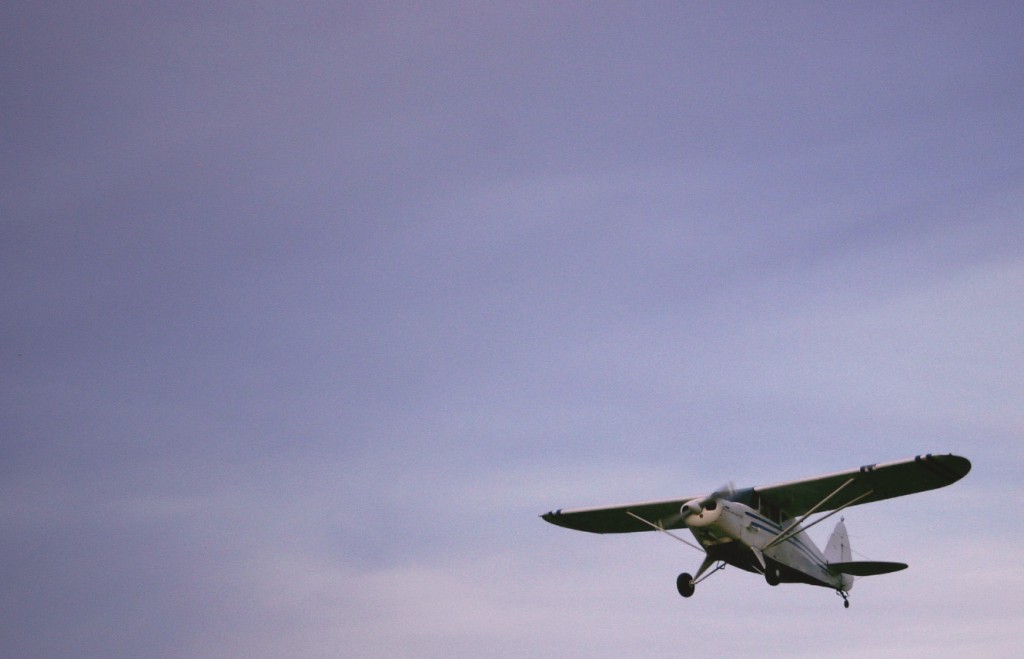What does it mean to solo?
14 CFR Part 61.51(d): …a pilot may log as solo flight time only that flight time when the pilot is the sole occupant of the aircraft.
Like all of the Federal Aviation Regulations, the above is an incredbly dry statement. It defines when you may log solo flight, which is an important step to obtaining your pilot certificate.
There are lots of other regulations pertaining to solo, defining even further what solo flight means to the FAA, to your instructor, and to you:
61.51(e)(4)(ii) states that you must have a current solo flight endorsement (as laid out in part 61.87). Got that? Good.
61.51(i)(2) lays out what you must carry with you when you solo as a student pilot during cross-country flights: your logbook and your student pilot certificate/medical (and any other record required by that section of the regulations). Got them all? Fantastic.
61.87 lays out all the things you must do before solo to even be eligible to solo in the first place:
- demonstrate satisfactory knowledge on a knowledge test given by your instructor
- review any incorrect answers from the test
- receive and log training in certain maneuvers
- surface operations including taxiing & runup
- normal & crosswind takeoffs and landings
- straight & level flight and turns in both directions
- climbs & climbing turns
- traffic pattern procedures, including entry & departure
- collision avoidance, windshear avoidance, and wake turbulance avoidance
- descents (turning & not turning) in high- and low-drag configurations
- flight at various airspeeds
- stall recognition, avoidance, and recovery
- emergency procedures
- ground reference maneuvers
- approaches to landing with simulated engine malfunctions
- slips to land
- go-arounds
- You must have received an endorsement on your student pilot certificate to solo the specific make and model of your aircraft from your instructor
- You must have received an endorsement in your logbook to solo from an instructor who has given you the above instruction within the last 90 days
- etc. etc. and on and on – you have to know these regulations, as they define precisely what solo flight is and when you can legally perform solo flight.
And that is that, right? That’s what solo flight is – a flight by a person who meets all the above criteria and is the sole occupant of an aircraft during flight.
But does that truly answer the question of what it MEANS to solo?
Aviation has a knack for knocking the wind out of its participants with all the limitations and restrictions and constraints and conditions that the regulations lay out for everyone who wants to set foot in an airplane and leave the ground.
But there’s a reason, I think, that the word solo was chosen to be used for the first time a person flies sans instructor, and it is not simply because the dictionary defines it as “a thing done by one person unaccompanied, in particular;” which, of course, it is.
But solo also has a beautiful connotation in the arts – music and dance, in particular, where a dancer or musician or singer steps away from all the others who have been there alongside for that song, that concerto, that period, and – on their own – does something beautiful.
Unaccompanied.
Notice I have not said “alone.” A solo of a musician is not them alone, but is a piece of a larger composition. The solo stands out BECAUSE it is related to the rest of the dance or the song, not because it is separate from it. The solo artist takes courage from the other artists who have helped support her up until that point, and she steps out on her own but not alone to add her voice, her motion, her music to the overall piece.
All the months and years of practice shape the artist to be ready and able to make that step – and so it is as a pilot.
The hours you have studied and practiced with your instructor have led you to this point, where you get to step out – on your own but not alone – and take flight.
Unaccompanied.
And like the solo artist, you – the solo pilot – know the technical pieces (as the musician knows the fingering of his instrument or the dancer the placement of his limbs for balance, you know the power settings and sight picture of your instrument – the airplane). You play the throttle to get the hum of the engine you are familiar with, and set your pitch to get the perfect balance of airspeed and lift and hear the exact right tone of the wind over the wings.
You are an artist of the air, and while you know all the regulations that got you to this point, right now you are simply free, and flying, as it should be. The checklists run through your head, and the crosswind component for your runway is in your mind, and you’re thinking “red over white” as you slide down the glidepath on final approach, but your heart is beating faster than ever, and you can’t wipe the smile off your face, because this feeling is like nothing you’ve ever felt. The safety net is gone, and you’ve never been more nervous, or scared, or READY for anything in your life.
And maybe you miss a note, or place your foot wrong and slip a little, or forget a word. But that bounced landing was YOUR landing – and whether you believed your instructor when she said “That was all you” is immaterial now, because that WAS all you, and whether it was bounced or beautiful, it was YOUR landing and no one can take it away from you. Because your supporting artists are all down there, and you are up here, on your own.
Unaccompanied.
So I’ll leave you with this, Captain:
Aviation loves to boast about the individualistic nature of its participants. Solo makes it sound like you finally got away from everyone else and did this thing alone. But that is as far from true as it gets. You got here through the help of your instructor and other pilots who encouraged you, motivated you, and rooted for you (whether you knew it or not).
For all the independent, self-reliant, individualist image aviation puts out there, we really rely on one another, and want to see each other succeed. We are an incredibly helpful and supportive family, we aviators. You might be solo, but you’re never alone.
Just unaccompanied – sometimes.
This is a Blogging in Formation post. Check out the rest of the Formation Bloggers in this month’s series: “Solo.”
April 1:
Andrew Hartley – Smart Flight Training
Karlene Petitt – Flight to Success – Near Midair!
April 2:
Rob Burgon – Tally One
Chip Shanle – Project 7 Alpha
April 3:
Eric Auxier – Adventures of Cap’n Aux
Ron Rapp – House of Rapp
April 4:
Brent Owens – iFLYblog
Mark L Berry – marklberry.com/blog
If you like what you see, share us with your friends: #blogformation

Loved the allusion between flying and the performing arts. It’s true, for every “solo” performance there’s usually a tremendous level of collaboration required to bring it to fruition.
Thanks, Ron! I think we aviatiors should give ourselves more artistic credit sometimes… making our airplanes do what they do, safely, regularly – that’s a balancing act and an effort of coordination that I think often rivals that of an orchestra director!
Great article Andrew! From someone who only flies “unaccompanied” these days, I can say you hit the nail on the head with this article. While we still have mutual support from controlling agencies and even other aircraft, it’s all on the solo pilot to bring the plane home.
Glad you enjoyed it, Rob! It’s always a bit of a “dance” between the pilot and ATC and/or other pilots, isn’t it?
Great post Andrew! You nailed it!
Thanks, Brent! I’m looking forward to the rest of the series and what you all write.
Great post Andrew! I still long to fly by myself.
Andrew… this is absolutely beautiful. I’m somewhat of speechless. Because i have never heard anything as eloquent about the beauty of flying solo but you are never alone. I love it!!!
Andrew such an excellent tribute to the solo flight. We forget how much a student must know and yet we don’t really know as much as we think when we take this first flight alone. I love as you mention that first bounce….because we own it. There is something about the power of doing and knowing you are in charge. We see students who have confidence and perform well when they have an instructor by their side. But the trick of a great instructor is to instill that confidence in their students so they can perform as well when they’re out there alone. But as you say… pilots are never alone. We are a team that soars together. Someone and their words of wisdom are always with you.
Chip: make it happen, brother! Just know that final approach will feel REALLY slow… :)
Karlene: Thank you so much! I was just telling Jill how satisfying it is to hear from another (much more prolific) writer how my writing made her “speechless.”
I thought it was pretty good, but getting that kind of feedback is always nice to hear! Glad you enjoyed it!